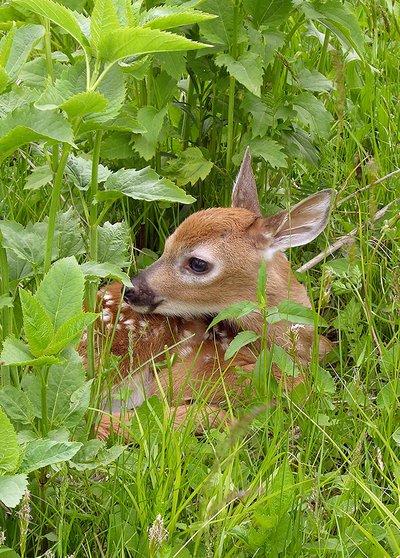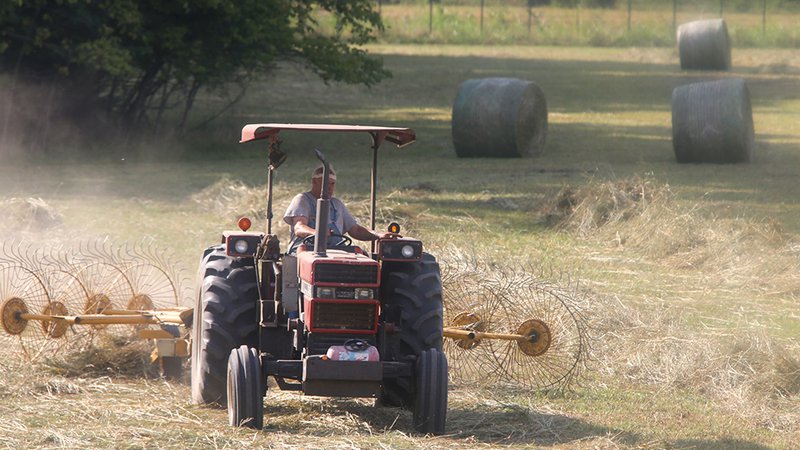Ted Zawislak Statewide Private Lands Supervisor
Nothing changes the landscaping of your property overnight like hay cutting your fields. Within a few days or a weekend, the landscape has changed drastically for wildlife that used those grasslands. Here are some common sense haying ideas to benefit wildlife and minimize the effects on young animals or smaller species that depend upon the cover the grasses provide.

Timing is everything
Time your hay-cutting with nesting season in mind. For increased wildlife nesting, delay haying until July 15 or later. This will allow ground-nesting birds time to hatch their broods. The nesting period for quail, turkey, and songbirds using pastures begins in early to mid-April and can continue through August.
Aim high
Set your mower as high as possible to avoid ground-dwelling wildlife. Raising a mower as little as 4 inches off ground level can save terrapins and small mammals. Install Plexiglass around the leading edge and sides of a mower to prevent wildlife from being drawn into mower blades.
Mow inside out
Cut hay starting in the middle of the field and mow towards the outer borders which will allow young and adult wildlife to stay in existing cover during the haying operation period. Animals also will be able to move to the borders as you cut instead of being trapped inside an ever-decreasing circle. This method also decreases predation of rabbits and young quail trying to cross open, recently hayed ground.
Protect field borders
Leave uncut field borders for wildlife cover. During hay cutting operations, leave a 30-foot or wider strip of hay around the outside of a field uncut to provide food, nesting, escape, and brood cover for wildlife. Predators can find nests easier in narrow strips than in wider borders. Irregularly shaped field borders provide even more cover for wildlife. Border width can vary, but a minimum width of 30 feet is optimal. This amounts to a little over an acre of habitat for wildlife in a field having a 30-foot-wide strip that is a mile in length.
Flush them out
Flushing bars can be mounted on the front of a tractor to move wildlife from the path of dangerous wheels and cutter. You can make a flushing bar by hanging 28 inch lengths of inch chain about 2 feet apart from a piece of angle iron. The bar should be at least 10 feet in length and mounted offset on the front of the tractor. The 28-inch hanging chains should be long enough to ride just above the surface of the ground. The first chain should be located 36 inches from the tractor frame. This method has been shown to effectively scare wildlife such as rabbits, turkeys, and some fawns away before they are hit by the hay cutter.
There is no doubt that hay cutting operations change the landscape of your property for a short period of time, these steps will minimize the negative impact for wildlife. Hay cutting has some long term effects for the landscape, however, it’s the short term effects, primarily during nesting season, that can be detrimental to wildlife. For more information on managing haylands and pastures for wildlife visit https://www.uaex.uada.edu/publications/PDF/FSA-9083.pdf
Visit www.agfc.com/habitat For more information on establishing and maintaining land for wildlife habitat improvement and programs to help. Check out our social media group at https://www.facebook.com/groups/arkplb






